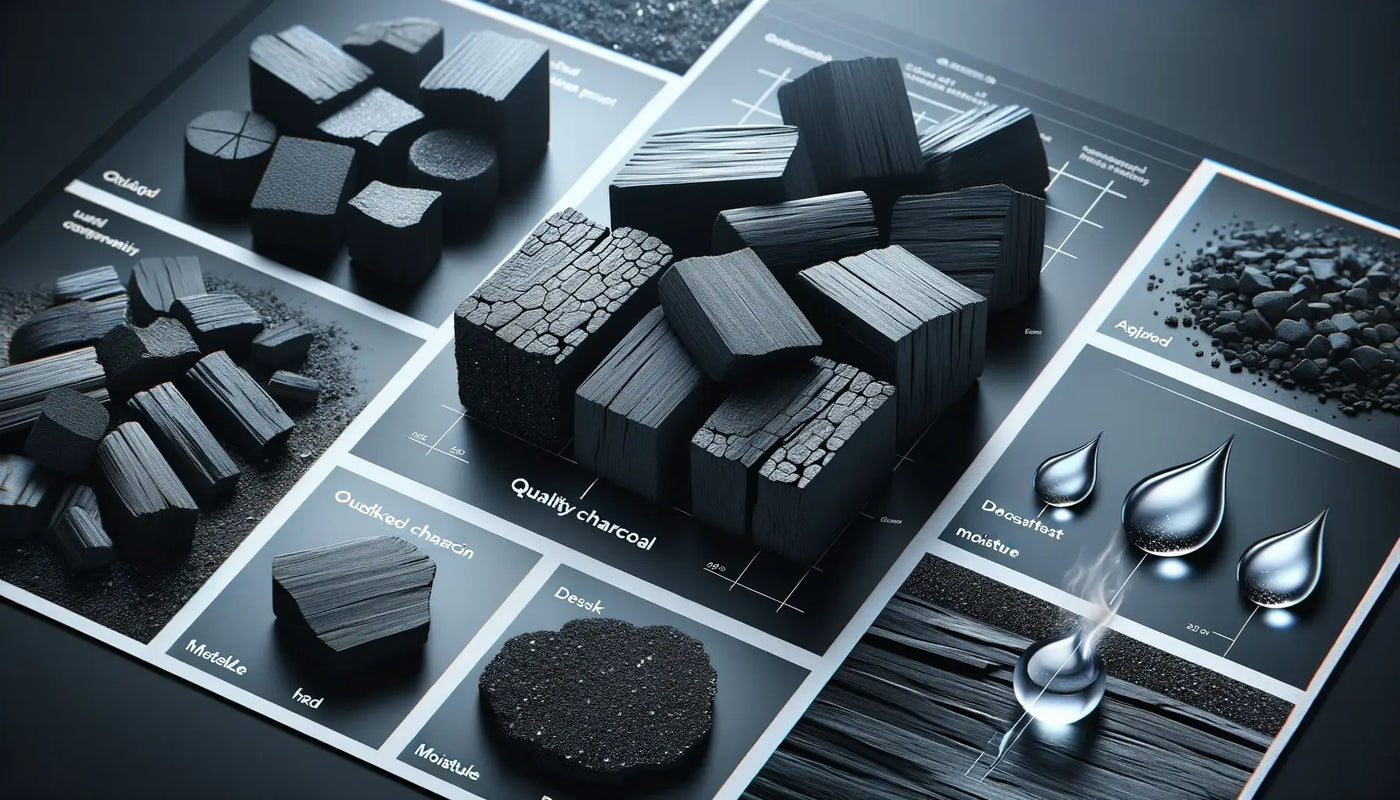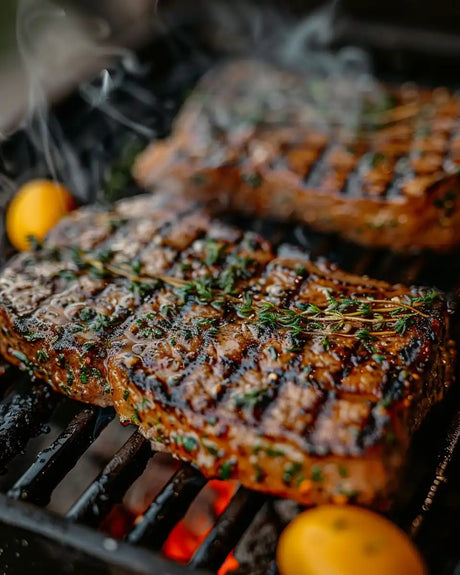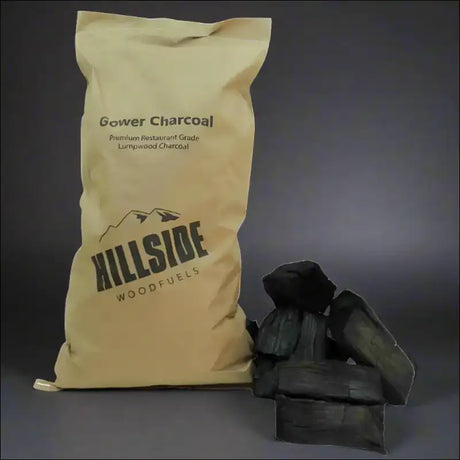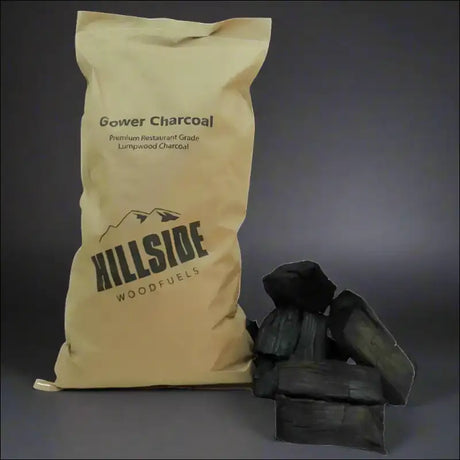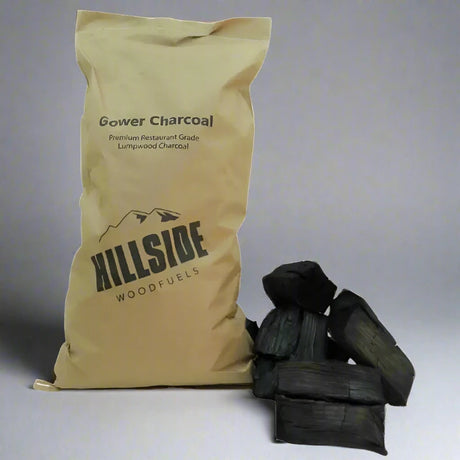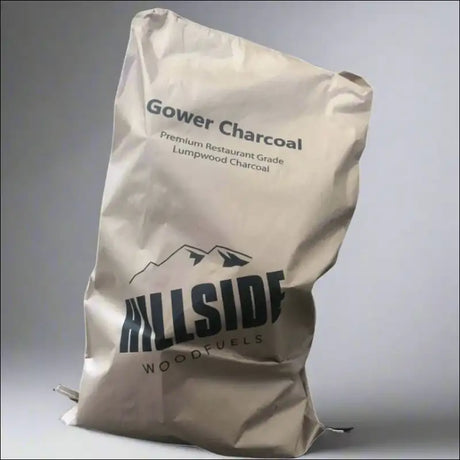Lumpwood charcoal has become a favorite fuel source for backyard chefs and professional pitmasters alike. But not all lump charcoal is created equal. High-quality lumpwood has distinct properties that optimize flavor, heat output, and ease of use. In this comprehensive guide, we’ll explore the key characteristics that set great lumpwood apart.
Definition of Lumpwood Charcoal
Lumpwood charcoal, also known as lump charcoal, refers to pieces of natural hardwood that have been carbonized through controlled burning. The wood chunks retain their shape but lose moisture and volatile compounds, leaving behind a lightweight material composed almost entirely of carbon.
Lumpwood stands in contrast to charcoal briquettes, which are manufactured from a combination of charcoal dust, coal, borax, limestone, sawdust, and other fillers. These additives allow briquettes to be conveniently pressed into uniform shapes. Lumpwood has no additives - just pure charred wood.
The irregular sizes and shapes of lumpwood pieces provide more airflow and a more dynamic burn compared to uniform briquettes. Top lumpwood brands source their wood sustainably from fruit, nut, or hardwood trees. Oak, hickory, maple, and mesquite are common woods used.

Physical Qualities of Good Lumpwood Charcoal
Several physical attributes determine how well lump charcoal performs for grilling, smoking, and cooking. From density to moisture content, these factors work together to enable great flavor and heat control.
Optimal Size & Shape for Best Burning Experience
Lumpwood comes in a range of sizes from small chunks to fist-sized pieces. Ideal lumpwood will have an average lump size between 2-4 inches. Very small chips and dust can choke airflow and lead to a weak, inefficient burn. Overly large lumps may not ignite or burn thoroughly.
Beyond size, the shape and visual consistency of lumps offers clues about quality. High-end lumpwood has chunks that are roughly similar in proportion from one piece to the next. Optimal lump charcoal burns evenly, so similarly-shaped pieces promote a steady burn rather than random flare-ups from lopsided lumps.
Density & Hardness: Key to Longevity and Efficiency
Quality lumpwood has a good balance of density and hardness. Very porous or brittle chunks can break down easily, creating charcoal dust that burns quickly. But overly dense, heavy pieces require extra airflow to burn efficiently and can contain more moisture.
Moderate density extends burn time by providing more mass in each lump while still allowing adequate oxygen flow. Hardness prevents crumbling during transport and makes the charcoal easy to handle without turning to dust. Test lumpwood by giving pieces a squeeze - you should feel some give without total collapse. Dropping a few lumps can also reveal excessive softness if the charcoal crumbles on impact.
Moisture Content in Quality Lumpwood Charcoal
For fast lighting and clean burning, lumpwood must have low moisture content - around 3-5% at most. Wet charcoal requires extra heat energy to evaporate moisture before ignition can occur. This delays lighting and contributes to white smoke and off-flavors.
Quality lumpwood feels dry to the touch and very lightweight per piece. Most high-end brands state the moisture percentage to confirm optimal levels for cooking. Always store lumpwood in a sealed container away from humidity to prevent re-absorbing water once opened.

Chemical Composition of High-Quality Lumpwood Charcoal
Beyond physical traits, the chemical composition of lumpwood indicates how clean, efficient, and flavorful its burn will be. These innate qualities depend on the carbonization process as well as the wood source.
Fixed Carbon Percentage: The Heart of Heat Output
Also called fixed carbon, this measures the percent of actual elemental carbon present in lumpwood after carbonization. High carbon content above 75% enables excellent heat output and burn times. Low carbon means more non-combustible compounds remain that can reduce heat energy and form unpleasant smoke.
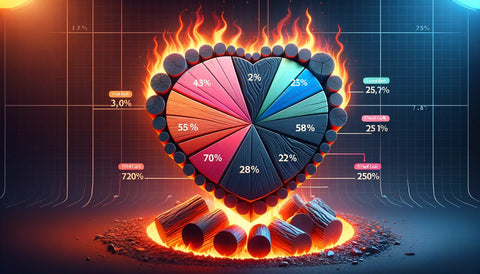
Role of Volatile Matter in Lumpwood Charcoal Flavor & Ignition
Volatile matter represents the oils, tars, and gasses released when lumpwood burns. Some volatile compounds provide pleasing aromas and flavors. But higher levels above 25% lead to more smoke production and potential bitterness. Quality lump keeps volatiles in the 20-25% range for balanced burn characteristics.
Ash Content: The Unsung Hero of Cleanup
Ash is the non-combustible mineral residue left after charcoal burns. Lumpwood naturally contains some ash from its original wood source. But excessive ash above 5% can hamper heat, while very white ash indicates potential filler additives like limestone. Ideal lumpwood leaves minimal grey ash with no artificial colors present.
Unwanted Impurities and Their Effect on Your Grill
Beyond inherent wood minerals, some lumpwood contains traces of sulfur, chlorine, or other chemicals that impart unpleasant flavors. Contamination can occur from poor carbonization or treating the wood prior to burning. High-quality brands filter their source wood and employ clean production practices to avoid imparting harshness.

Burning Characteristics of Premium Lumpwood Charcoal
In terms of lighting and burning, excellent lumpwood is easy to ignite, burns consistently, and provides ample cooking time and temperatures. These burn attributes allow lumpwood to excel across any cooking application.
Swift Ignition: Mark of a Great Lumpwood
Quality lumpwood lights quickly and easily with standard fire starters. Optimal pieces fully ignite within 5-10 minutes after lighting. Sound lumpwood has no overly dense or wet pieces that resist catching fire. Quick ignition prevents bitterness from wood burning inefficiently.
Consistent Burn Duration: Key to Grilling Success
With moderate density and carbon content above 75%, top-grade lumpwood sustains a burn for 45-60 minutes or longer per pound used. Duration depends partly on lump size, airflow, and cooking temperature. But quality charcoal avoids overly rapid burnout. You should achieve several hours of steady cooking time with minimal ash remaining.
Heat Consistency & Output: Decoding Temperature Mastery
Great lumpwood provides uniform heat across the entire grill or smoker surface. With similar sized pieces burning at comparable rates, you won’t get random hot spots. Expect temperatures between 107-315+°C(225-600+°F) depending on air flow and quantity used. Quality lump avoids excessive variability in heat output.

Savoring the Flavor: Aroma Profile of Quality Charcoal
When burned cleanly, all-natural lumpwood imparts subtle, pleasing flavors influenced by the source wood. These differences make certain wood types ideal for particular cuisine styles.
Oak and hickory provide a versatile, mild smokiness. Fruit and nut woods like apple, cherry, pecan, and mesquite have hints of sweetness and spice. There should never be strong chemical overtones or bitterness from improper carbonization. Consistency also matters - the same brand’s aroma profile should remain similar across production batches.

Ethical Sourcing & Production
To ensure sustainable practices and output quality, reputable lumpwood brands control the entire supply chain. Wood is harvested from responsibly managed forests or orchards without using old construction lumber or demolition waste wood containing chemicals.
The carbonization process matters greatly. Kiln burning with minimal oxygen and low residual hydrocarbon levels prevents bitterness and off-gassing. Slow, meticulous techniques yield high fixed carbon content in the 75-80% range. Controlling variables like burn duration and temperature is essential.
Buying lumpwood from a producer that manages wood sources and conducts in-house burning generally results in a cleaner, more consistent product.
Visual Cues for Identifying Quality Charcoal
Judging lumpwood by sight and touch provides reliable clues about quality:
- Color - Quality lumpwood has a matte black color without grayish hues from ash or yellowish tints indicating sulfur. Real wood char has visible grain patterns from the carbonization.
- Texture - Top brands feel dry and lightweight with visible pores and grain. Properly carbonized lumpwood isn't powdery but gives slightly when squeezed.
- Consistency - Uniformity in size, shape and appearance indicates controlled production and performance. You want minimal crumbling, dust or overly dense pieces.
- Hardwood Aroma - Natural, subtle woody aromas should come through when smelling quality lumpwood. No harsh, bitter chemical undertones.

Price vs. Value: Cost Is Not Always a Good Indicator of Value
While lumpwood does cost more than briquettes, prices still vary widely based on quality. As the saying goes, “You get what you pay for.”
Very inexpensive lumpwood often contains high ash filler, lower carbon content, and off-tastes from poor processing. Yet premium brands with 83%+ carbon and ideal burn traits can exceed $1 per pound.
Also inspect value based on usable quantity per bag, minimizing charcoal dust and fines which burn fast. With experience, you can better judge brands that provide performance commensurate with cost.
Conclusion
Identifying lumpwood charcoal that ticks all the boxes for purity, clean burn, and flavor takes some research and trial and error. Seek out producers who confirm specifications like carbon content, volatile levels, burn times, and source wood. Brands who obsess over controlling their process generally deliver a noticeably better product.
While lumpwood involves some extra work compared to briquettes, the dividends in cooking ability and food quality make it worth the effort. Once you dial in great lumpwood brands matched to your cooking needs, you open new possibilities for flavor and satisfaction. Your tastebuds will thank you.
FAQs About The Qualities of Lump Charcoal
What wood sources make the best lump charcoal?
Popular woods like oak, hickory, maple, and fruit woods provide a mild, versatile flavor for grilling. Opt for lumpwood with a clean aroma and subtle smokiness from the natural wood. Avoid lump with strong bitter undertones.
What carbon content should quality lump charcoal have?
Look for a carbon content of 75-80% or more. This ensures excellent heat output and burn duration. Lump with less than 70% carbon may burn fast and cool.
How can I tell if lump charcoal has the right moisture content?
Properly cured lumpwood feels very lightweight when you pick up a piece. It should not feel wet or damp. Quality lump may make a light hollow sound when tapped together.
Why does ash content matter in lump charcoal?
Lower ash content around 3-5% improves heating performance. High ash can choke airflow. Very white ash signifies filler additives were used. Pure wood lump leaves more grey ash.
What is a good average size for lump charcoal pieces?
The best lumpwood will have chunk sizes ranging from 2-4 inches on average. Avoid fine dust and chips that burn fast. Fist-sized and larger pieces may have trouble igniting fully.
How long should a pound of quality lump charcoal burn?
Expect 45-60 minutes or more of steady burn time per pound of lumpwood used. Denser hardwoods tend to last a bit longer than lighter fruit woods.
What are signs of poor quality lump charcoal?
Low density pieces that crumble easily, high amounts of dust, poor ignition, excess smoke, and short burn times all indicate inferior lumpwood. Off-flavors like strong chemical tastes also signal issues.
How can I get the best value when buying lump charcoal?
Seek brands that offer high usable lump content per bag with minimal small pieces and dust. Paying a little more for brands with excellent ratings often provides cost efficiency in the long run.

